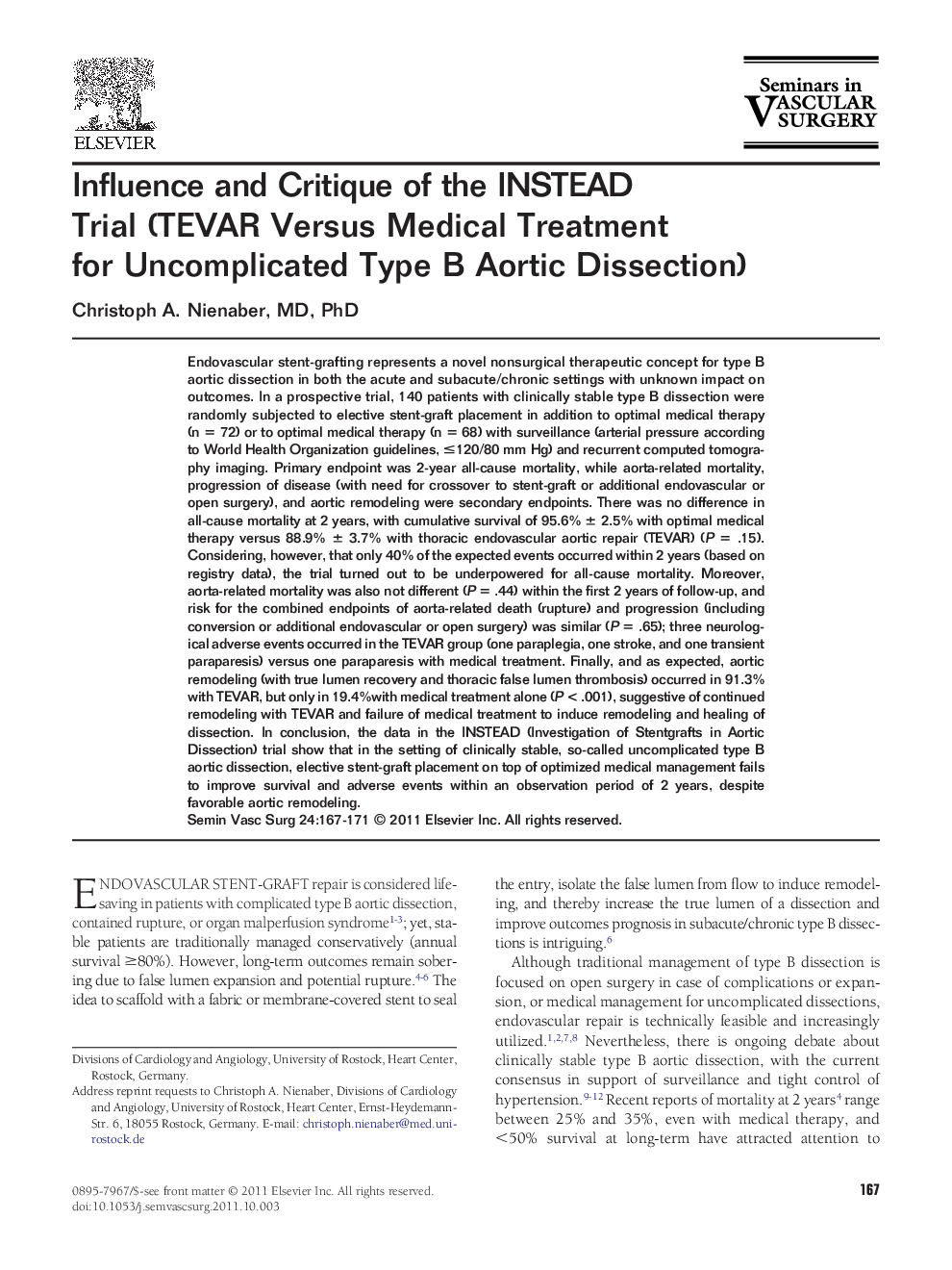| Article ID | Journal | Published Year | Pages | File Type |
|---|---|---|---|---|
| 3026193 | Seminars in Vascular Surgery | 2011 | 5 Pages |
Endovascular stent-grafting represents a novel nonsurgical therapeutic concept for type B aortic dissection in both the acute and subacute/chronic settings with unknown impact on outcomes. In a prospective trial, 140 patients with clinically stable type B dissection were randomly subjected to elective stent-graft placement in addition to optimal medical therapy (n = 72) or to optimal medical therapy (n = 68) with surveillance (arterial pressure according to World Health Organization guidelines, ≤120/80 mm Hg) and recurrent computed tomography imaging. Primary endpoint was 2-year all-cause mortality, while aorta-related mortality, progression of disease (with need for crossover to stent-graft or additional endovascular or open surgery), and aortic remodeling were secondary endpoints. There was no difference in all-cause mortality at 2 years, with cumulative survival of 95.6% ± 2.5% with optimal medical therapy versus 88.9% ± 3.7% with thoracic endovascular aortic repair (TEVAR) (P = .15). Considering, however, that only 40% of the expected events occurred within 2 years (based on registry data), the trial turned out to be underpowered for all-cause mortality. Moreover, aorta-related mortality was also not different (P = .44) within the first 2 years of follow-up, and risk for the combined endpoints of aorta-related death (rupture) and progression (including conversion or additional endovascular or open surgery) was similar (P = .65); three neurological adverse events occurred in the TEVAR group (one paraplegia, one stroke, and one transient paraparesis) versus one paraparesis with medical treatment. Finally, and as expected, aortic remodeling (with true lumen recovery and thoracic false lumen thrombosis) occurred in 91.3% with TEVAR, but only in 19.4%with medical treatment alone (P < .001), suggestive of continued remodeling with TEVAR and failure of medical treatment to induce remodeling and healing of dissection. In conclusion, the data in the INSTEAD (Investigation of Stentgrafts in Aortic Dissection) trial show that in the setting of clinically stable, so-called uncomplicated type B aortic dissection, elective stent-graft placement on top of optimized medical management fails to improve survival and adverse events within an observation period of 2 years, despite favorable aortic remodeling.
